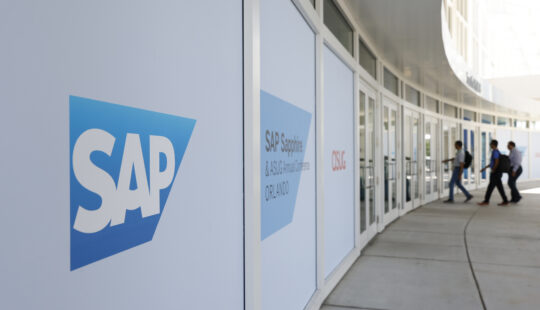Dealing with the COVID-19 pandemic has been, above all, about people. From all the people working in the healthcare sector, who have willingly put themselves in harm’s way, to the people who have kept essential services running, we owe them all a tremendous thanks – today more than ever.
Additionally, the pandemic has hit companies, forcing them to respond to, cope with, and look beyond the crisis. Together with our customers and partners, we can shape the next normal.
At SAP, we understand that in these extraordinarily difficult times, we have an opportunity and duty to demonstrate the power of our corporate purpose to help the world run better and improve people’s lives.
The Pandemic Runs in Waves, So Does Business
The COVID-19 pandemic has gone through phases, each of which is characterized by a different set of needs and requirements that have impacted our employees, partners, and customers. While we can put 2020 under the theme “new normal,” we are now in a transition phase toward the “next normal.” We learn as we go and can build on this experience to be prepared for future disruptions.
Wave 1: Responding to the Crisis and Human Impact
The first phase, corresponding to the new challenges, involved reacting to the most urgent needs. Last year in June, I shared how we set SAP up to help our customers grapple with the immediate impact of the pandemic and meet the changing demands of their employees and customers — for example, with 80 top priority legal changes within less than 50 days. Uncertain times require agility and flexibility. SAP CEO Christian Klein just explained that resilience starts with people.
Among SAP customers, the first to be affected by the pandemic were businesses whose supply chains depended on components manufactured in COVID-19 hotspots, and those that experienced sudden swings in demand or supply. Examples include providers of personal protective equipment (PPE), certain consumer product makers, and manufacturers of office equipment. Additionally, customers adapted their production to produce and provide PPE, such as facial masks, to cover the increased demand.
That is why last year, SAP opened access to software, including SAP Ariba Discovery and SAP Integrated Business Planning for Supply Chain, for 90 days and free to anyone. These products help to make procurement processes more transparent, predict demand shifts, and deal with the dynamics caused through supply chain disruptions and the domino effects they have. Customers with agile supply chains, including those facilitated by Ariba Network, were able to switch suppliers quickly and keep critical production lines running. Here are some examples:
- Cascades, which recycles and repurposes fibers for packaging and tissue products, used SAP Integrated Business Planning for Supply Chain to better predict shifts in demand, increase flexibility by moving from weekly to daily planning, and improve response times by prioritizing essential packaging products during the pandemic.
- Similarly, one of the examples where SAP helped and that makes me most proud is how SAP Ariba Discovery helped a construction supply company source 500 beds for a temporary hospital when the COVID-19 infections reached a high point in New York City last year.
Wave 2: Coping with the Impact on Businesses and Enabling Solutions
The focus then extended to help customers manage the pandemic’s impact on their businesses. SAP applications and services helped our customers — existing and new — manage their way through the pandemic. With many companies seeking to maintain lean operations in order to protect revenue and preserve cash flow, we worked with them to accelerate the adoption of cloud-based technology.
Our product portfolio is geared to enable our over 400,000 customers operating in more than 180 countries across the globe to act quickly and pivot operations and processes in response to changing market conditions and demand shifts. The SAP Globalization Services organization, for example, implemented 290 COVID-19 emergency changes across 47 countries. SAP is proud to call every medical equipment and supply provider in the Forbes Global 2000 and 18 of the world’s 20 largest pharmaceutical companies a customer.
- Among them, German biotech company CureVac has focused on developing and producing vaccines, while relying on SAP S/4HANA Cloud for its business and operations. The company’s COVID-19 vaccine is currently in the testing phase. Similarly, U.S. pharma company Moderna runs enterprise resource planning (ERP) and digital supply chain solutions from SAP. Additionally, Moderna uses SAP Advanced Track and Trace for Pharmaceuticals to comply with legislation and prevent consumers from counterfeit medication and relies on SAP Information Collaboration Hub for Life Sciences to collaborate with partners along the value chain.
- Our new packaged offering, a vaccination collaboration hub, helps make collaboration among component suppliers, pharmaceutical manufacturers, distributors, government, and life science organizations easy. The offering which is based on SAP Information Collaboration Hub for Life Sciences, brings together critical capabilities from vaccine manufacturing to distribution – allowing supply chain planning and providing supply chain visibility and post-vaccination monitoring.
Wave 3: Looking Beyond and Coming out of the Crisis Stronger, More Resilient, and Transformed
Business models have been reshaped literally overnight and we have had to get used to a new way of working. Now we find ourselves facing the next normal. Online commerce has been accelerated, collaborative working is required more than ever before, and leaders recognize that companies are more resilient and business operations can be more sustainable when operating in networks.
As a McKinsey global survey of executives revealed, companies have accelerated the digitalization of their customer and supply chain interactions and their internal operations by three or four years. Once “nice to have,” digital capabilities are now a “must have” in order to build resilience for a sustainable future ahead.
We deliver innovation to give customers the ability to reassess their processes and reallocate resources as needed. That’s the post-pandemic opportunity for enterprises; those that are able to adapt to the changed environment and shape the next normal will be the most successful.
I see three major trends for our work, life, and the planet:
- We already see a shift in how we work, collaborate, and learn – from a mix of remote and in-person work to collaborative working using technology, and to learning supported by bite-sized offerings, continuous engagement, and lifelong curiosity. The work environment will be more agile, flexible, and inclusive, also for the contingent workforce, helping companies be resilient to changing demands.
- The way we consume goods is changing too. During the pandemic, online commerce has increased significantly, in Germany alone by over 12%. Consumers require an end-to-end experience that is founded on deeply integrated processes, including one consistent view on the customer, personalized experience, commerce via various channels, and excellent service. There is also a need to rethink existing processes, such as making the returns management more intelligent, sustainable, and circular. Using SAP Commerce Cloud, INDEX-Werke, a supplier in the automotive industry, offers its parts online and provides technical support remotely. This helped INDEX-Werke keep its customers’ production running throughout the pandemic.
- This is leading right away to sustainable and fair value chains – from production to delivery to return and recycling. Beyond that, let’s explore more efficient and profitable ways of procuring, manufacturing, supplying, and serving end consumers. I strongly believe business networks will scale the positive effects.
Even when this pandemic is over, we will not return to the way things were before. We know that we must learn to live with the virus and its impact on people, business, and society. And we want to do our part by helping companies bring employees back to their workplaces, provide travel recommendations, and identify potential risks for employees. Let me give two examples: First, as part of our new back to work offering, and where legislation and local data protection rules permit, companies will be able to add new health and vaccination status fields to the People Profile in the SAP SuccessFactors Employee Central solution, allowing employees to enter employee vaccine information. Second, SAP offers the SAP Fiori app “Workspace Booking” for SAP Cloud for Real Estate. Customers can predefine local capacity thresholds and allow employees to simply book their workspace and return to work safely.
Perhaps most important is long-term adaptability and resilience. We will undoubtedly face new challenges caused by geopolitical events, climate change, health crises, and the like. Companies must be able to actively manage continuous change and adapt to new circumstances – here SAP can and will always help our customers to cope with the next normal.
Stay safe!
This article first appeared on the SAP Global News Center.



